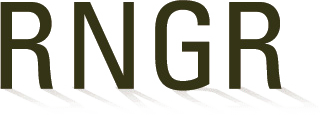
Achnatherum (hymenoides)
|
Andrea Kramer Conservation Scientist Chicago Botanic Garden - Research 1000 Lake Cook Road Glencoe, Illinois 60022 847-835-6971 akramer@chicagobotanic.org http://www.chicagobotanic.org |
|
| Family Scientific Name: | Poaceae | ||
|---|---|---|---|
| Scientific Name: | Achnatherum hymenoides (Roem. & Schult.) Barkworth | ||
| Common Synonym: | Stipa hymenoides Roem. & Schult. | ||
| Common Name: | Indian ricegrass | ||
| Species Code: | ACHY | ||
| Ecotype: | RIMROCK CULTIVAR | ||
| Propagation Goal: | Seeds | ||
| Propagation Method: | Seed | ||
| ProductType: | Propagules (seeds, cutings, poles, etc.) | ||
| Time To Grow: | Weeks | ||
| Propagule Collection: | Purchased | ||
| Pre-Planting Treatments: |
APPROACH: This project aimed to determine optimal germination conditions for species currently used in restoration in the Colorado Plateau, as well as other priority forb species that may be beneficial to include in future restoration efforts. For this study, seeds were plated on 1.5% agar in petri dishes (4 replicates of 25 seeds per treatment) and incubated in growth chambers at Chicago Botanic Garden using six temperature treatments intended to represent different seed sowing times and locations in the Colorado Plateau (treatments are shown as day/night temperatures respectively, using a 12h/12h light/dark cycle): TREATMENTS: 1) early-spring (4 weeks at 52°F/34°F) 2) winter (12 weeks at 34°F) then early-spring (4 weeks at 52°F/34°F) 3) mid-spring (4 weeks at 59°F/41°F) 4) winter (12 weeks at 34°F) then mid-spring (59°F/41°F) 5) late-spring (4 weeks at 68°F/50°F) 6) winter (12 weeks at 34°F) then late-spring (68°F/50°F) |
||
| Establishment Phase: | RESULTS: Very few viable Achnatherum hymenoides Rimrock seeds germinated in this study, regardless of temperature treatment. We actually ran the same test on 3 different seedlots of this cultivar (purchased from 3 different vendors in the same year). Two of the seedlots had 0% germination in all treatments, while one seedlot showed low (5-7%) germination when exposed to winter conditions and early- or mid-spring temperatures. This suggests that very few seedlings should be expected during the first spring/early summer after seeding, regardless of seeding timing. The figure at http://tinyurl.com/CBGSeedGermACHY shows the average percent germination and standard deviation of viable seeds for each treatment in the single seedlot that had germination. | ||
Citation:
Foxx, Alicia; Kramer, Andrea T. 2015. Propagation protocol for production of Propagules (seeds, cutings, poles, etc.) Achnatherum hymenoides (Roem. & Schult.) Barkworth Seeds Chicago Botanic Garden - Research Glencoe, Illinois. In: Native Plant Network. URL: https://NativePlantNetwork.org (accessed 2025/12/01). US Department of Agriculture, Forest Service, National Center for Reforestation, Nurseries, and Genetic Resources.



